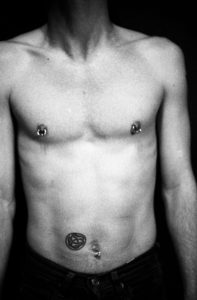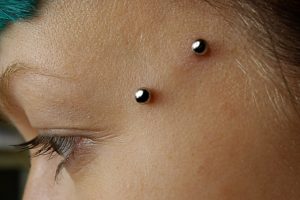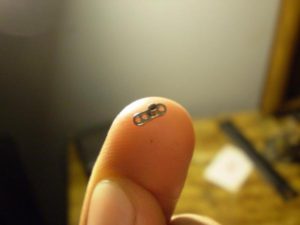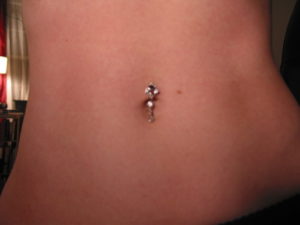This week we cover the most common body piercings we do namely the nipple piercing, surface piercing, micro dermal piercing,stretching, flesh tunnels and belly button piercing aka navel piercing.
Nipple Piercing

Nipple piercings are one of the hottest piercings anyone can get. They look good on men and women alike.
Nipples can be pierced in many different ways, but horizontally is the most popular. They can also be done vertically and diagonally though, and look equally awesome. Plus, if you’re into a more ‘extreme’ look, you can have multiple piercings through the same nipple.
The length of a nipple bar really depends on the individual needs and the design of the jewellery. Someone with smaller nipples might prefer a 12 mm long bar, while someone with bigger nipples may prefer 16 mm, or even 19 mm.
We only pierce nipples with 1.6 jewellery. Most nipple piercings here are pierced only using barbells. You can change to ring once the piercing has healed.
Surface Piercing

The surface piercing pierces flat areas of the body, like the chest or upper cheek. While other piercing types typically feature an entrance hole and an exit hole that’s usually directly behind the entrance hole, surface piercings feature entrance and exit holes next to each other on top of the skin.
Located in various places around the body, piercers perform surface piercings on the less ‘fleshy’ areas of the body. These locations are alternative options and will make a welcome change from some of the more common piercing options.
Surface piercings include nape/neck piercing, collarbone piercing, hip piercing, wrist piercing, surface tragus and also anti eyebrow piercings.
Surface piercings are usually pierced with a staple bar which the corners of the staple anchor the barbell into the skin to reduce rejection.
For our surface piercings we use 1.2 and 1.6 barbells depending on the position of the piercing.
Micro Dermal Piercing

A dermal piercing, also known as a microdermal piercing or a single-point piercing, is a piercing that lies on any flat surface of the body and is held in place with a dermal anchor that is installed underneath the skin. Ordinary body piercings have entry and exit points for the jewelry, but, in a dermal piercing, the jewelry sits on the surface and is secured with an anchor that is embedded in the dermal layer (underneath the flesh). This gives the appearance of having small beads on the surface of the skin.
This type of surface piercing is popular nowadays because it can be placed on almost any flat surface of the body, which allows you to decorate areas that are difficult to pierce with regular piercings.
Microdermal piercings are more commonly performed using a dermal punch because the punch is less painful. It is also safer than a needle because it has a protective mechanism that prevents the piercing from going too deep into the skin.
Stretching / Flesh tunnels

There are many different methods of stretching, but they all work toward the same result: increasing the size of your hole. The key to stretching is time. The slower you stretch, the easier and more comfortable it will be, and the further you will be able to go.
With many soft tissue piercings such as the earlobe there should be little to no discomfort with proper stretching. Some more
sensitive piercings such as the nostril, lip, cartilage, nipple or genital area may be uncomfortable even when stretched properly. Discomfort should never be severe with any stretching, piercings should never bleed or appear torn when stretched. This is a sign of overstretching.
We advise stretching no more than 1mm at a time to ensure your piercing heals well around the jewellery before the next stretch.
Stretching advice will vary based on the person’s anatomy, current health of the piercing, chosen jewellery, and goal size.
Belly Button Piercing aka Navel Piercing

We only pierce belly buttons/navels with 1.6 curved barbells/banana bars.
